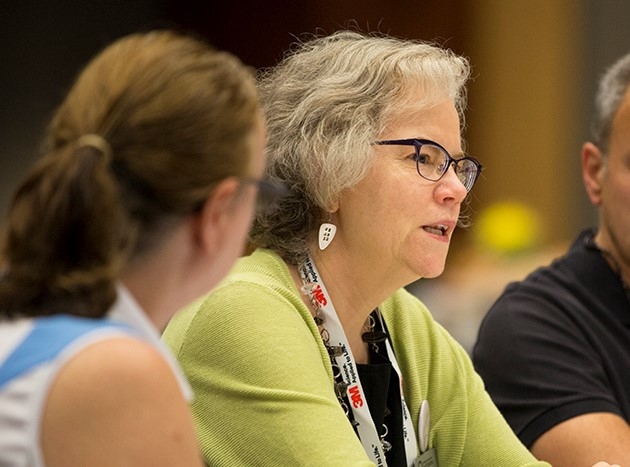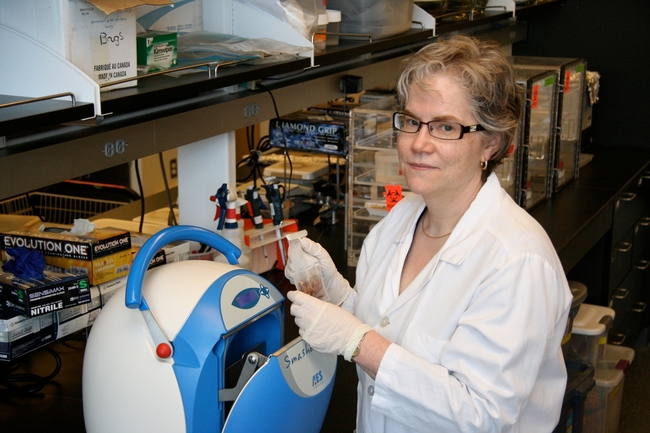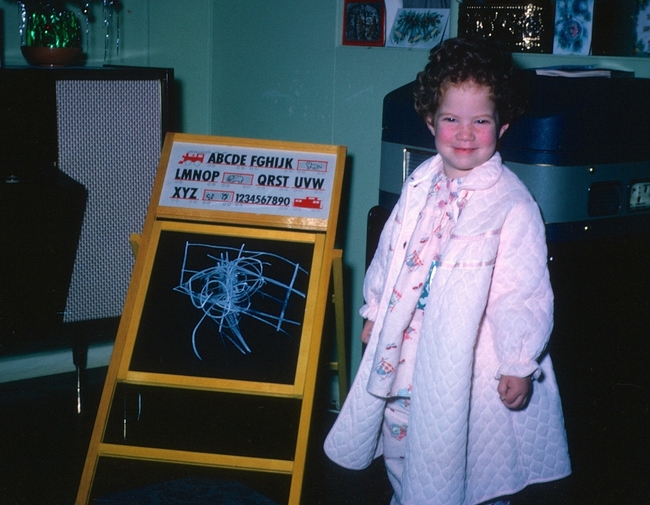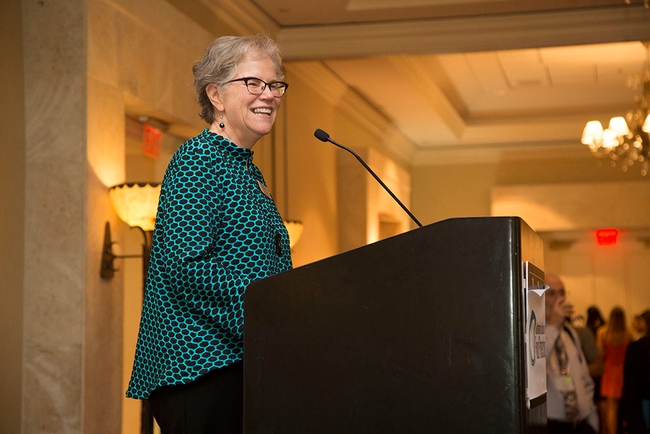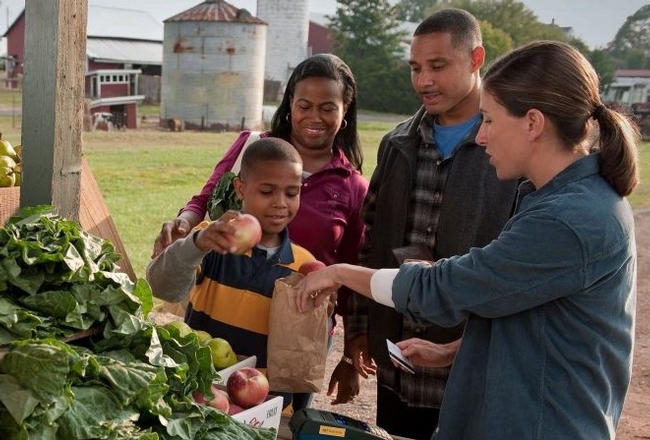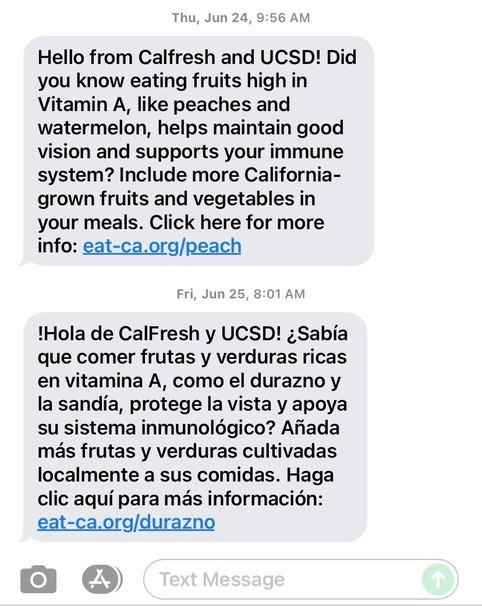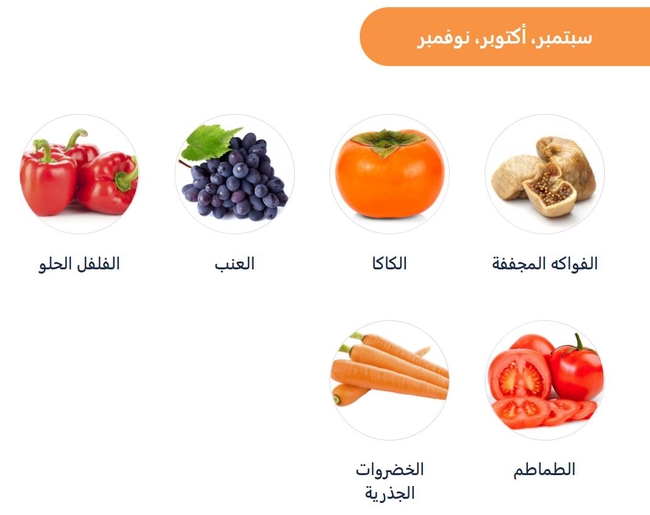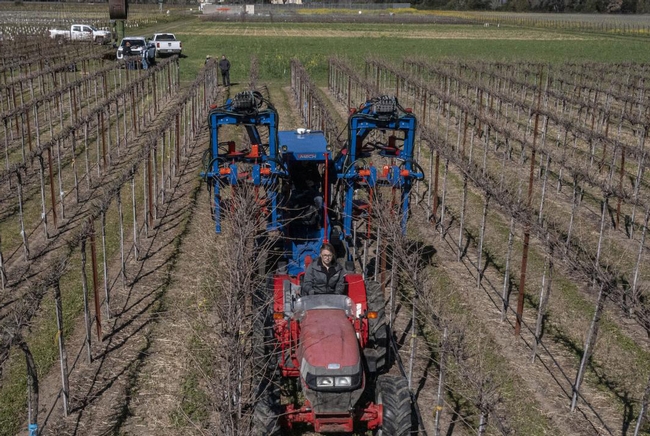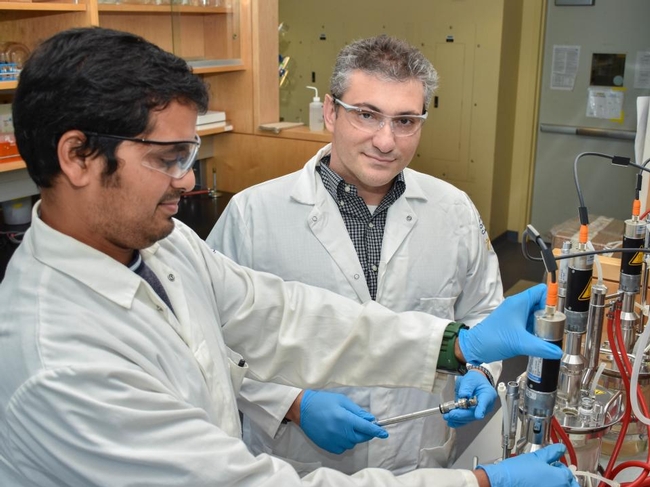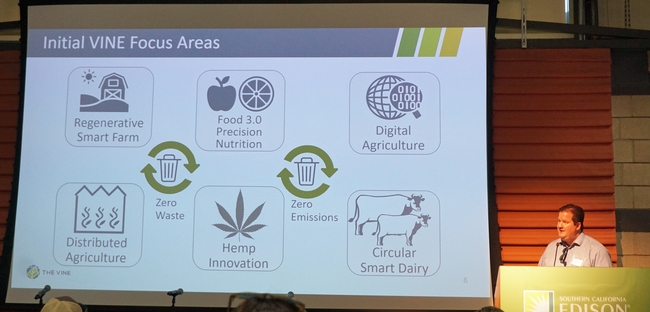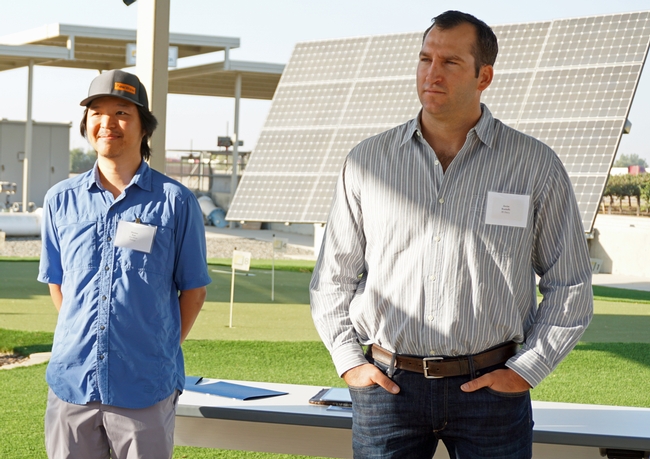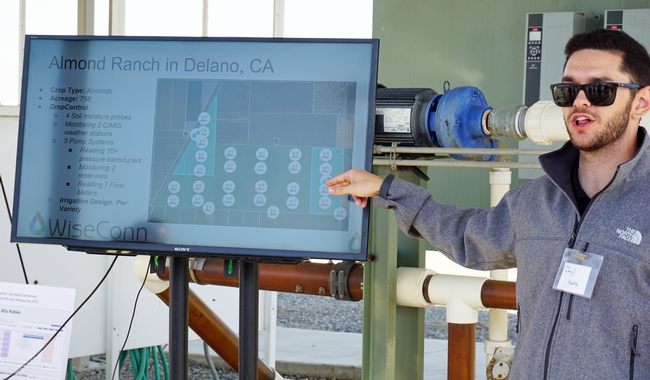Posts Tagged: technology
Five questions with food safety expert, new AAAS Fellow Linda Harris
Professor of Cooperative Extension shares career story, appreciation for UC Davis
After growing up in northern British Columbia, in a remote smelter town called Kitimat (“an 8-hour drive from the nearest McDonald's”), University of California Professor of Cooperative Extension Linda J. Harris embarked on an academic journey that crisscrossed North America and eventually led to her election as a Fellow of the American Association for the Advancement of Science.
AAAS, the world's largest multidisciplinary scientific society and publisher of the journal Science, recently announced the election of its 2021 class, which will be inducted during its annual meeting, Feb. 17-20.
In addition to Harris – a faculty member in UC Davis' Department of Food Science and Technology – four other UC Agriculture and Natural Resources affiliates will be inducted: Helene Dillard, dean of the UC Davis College of Agricultural and Environmental Sciences; Kathryn Uhrich, dean of the UC Riverside College of Natural and Agricultural Sciences; and UC Berkeley Professors Rodrigo Almeida and Paolo D'Odorico.
Harris, a Certified Food Scientist, recently shared her thoughts on the value of extension work, her contributions to the field, UC Davis' support for women in academia, and the arc of her career journey.
How did you get your start in food science and microbiology?
I was interested in science at an early age. As an undergraduate student at the University of Victoria in Victoria, B.C., I enrolled in biochemistry at the suggestion of my high school biology teacher. In my second year, I switched to the University of Alberta in Edmonton, Alberta and decided to review the course catalog – a paper version! When I got to the section on Food Science, the applied nature of the field just sounded right and I never looked back.
However, I didn't do particularly well in microbiology as an undergraduate student – too much memorization for me. At the end of my B.S. I was ready for a job in the food industry and took the very first job I was offered – ironically enough as a dairy microbiologist in a quality control lab. Thankfully, that job opened my eyes to the possibilities in microbiology. What was memorization turned into something I learned through doing and I was hooked.
Two years later, I was ready to go back to school and contacted a professor of food safety microbiology at the University of Alberta who fortunately had funding for me. During my M.S. degree in food microbiology, he encouraged me to pursue the Ph.D. – which was not something I had ever considered – and that led me to leave Canada and head to North Carolina State University and a Ph.D. in microbiology in the Food Science Department, where I worked on a project related to the fermentation of sauerkraut.
I did have one publication related to food safety during my time at NC State, and when I took my first faculty position back in Canada [University of Guelph in Ontario] I continued to work in food safety, mostly with meat and meat products.
I am so glad that I saw the advertisement for my current position and that I followed my instincts to apply for the job. The opportunities to grow professionally and to work in the food safety area at UC Davis, within the Cooperative Extension network in California, and with collaborators across the U.S., and around the world, have been enormous, and I am extremely grateful for the path that led me here.
February 11 is the United Nations-designated “International Day of Women and Girls in Science.” How has UC Davis supported women in your scientific field?
My career in STEM [science, technology, engineering and math] has been very rewarding and many of the gender barriers I faced early on have been addressed. I feel very fortunate to have landed at UC Davis and I am thankful that there is a long history of addressing these barriers at this institution.
When I was hired in 1996, the Department of Food Science and Technology was about 25% women and both the department chair and dean of the college were women. I had never been in a department or college with so many women faculty, including in positions of leadership. It was a very important consideration in my move. Today our department is 50% women and I proudly served for five years as the second woman department chair, from 2016 to 2021.
As a first-generation university graduate raised by a single mother, you have a unique perspective in encouraging young people on their path toward a STEM career. What advice do you have for them?
To those contemplating a career in STEM, I would say: be open to new opportunities and adventures – you never know where they may lead you. Get involved in leadership in any capacity you can from student organizations or around other things that interest you. Skills that you learn with these types of activities will be invaluable to your career.
I am very much an introvert and had to work hard to overcome my fear of public speaking. In addition to leadership roles in student clubs, I joined Toast Masters while working on my Ph.D. These activities had a huge impact on building my confidence and helped influence my career choices.
In the AAAS Fellows announcement, it says you were elected for “contributions to the field of food safety microbiology, especially related to control of Salmonella and other pathogens in low-moisture foods and fresh produce.” Is that your proudest achievement in the field?
I am most proud of the work described by that short statement especially as it applies to California-grown commodities. I would say that my laboratory is best known for work with the tree nut industry – almonds, pistachios and walnuts, as well as a range of types of fresh produce grown in this state.
My laboratory has worked to understand behavior, movement, prevalence, and especially control of foodborne pathogens like Salmonella during production in the field through harvest and postharvest handling all the way through to consumer practices.
I have been fortunate to have many terrific state, national and international collaborators and an outstanding group of people working in my laboratory as we set the foundation for some of the food safety research in tree nuts and produce. It has been most gratifying to watch the significant growth in these fields of investigation, especially with a new generation of scientists that span the country and beyond.
Another “hat” you wear is UC Cooperative Extension specialist. How have you contributed to food safety knowledge and practices in our communities?
I think you will see that my “hats” are not that different. The research from my laboratory has provided the foundation for several commodity-based, food-safety risk assessments – for almonds, pistachios, and walnuts. And these, in turn, have been used in support of regulations or helped guide implementation of safer food industry practices. Our research has also informed several publications aimed at consumer handling of fresh fruits and vegetables and has been cited in regulations pertaining to fresh produce safety. It is gratifying to see our research being used.
My research and extension work are very integrated. One feeds the other. Because I have been able to interact with stakeholders (especially integral to my position as a Cooperative Extension specialist), I have been able to understand firsthand some of the pressing food-safety issues and challenges in California. These stakeholder interactions have largely formed the basis for most of my research and extension grant proposals over the years. The collaborations that have resulted from extension activities have opened doors and access to many unique opportunities for sample collection and research exploration.
CalFresh participants welcome texts on benefits of California-grown produce
The buzz or chirp of an incoming text message started some San Diego County residents on the path to a healthier diet during this past year. In September 2020, most CalFresh participants in the county – more than 172,000 households – began receiving monthly text messages about the benefits of California-grown fruits and vegetables as part of a pilot program.
This novel approach to delivering nutrition messages to California food assistance program participants was developed by a partnership of the Nutrition Policy Institute of UC Agriculture and Natural Resources, the UC San Diego Center for Community Health and the County of San Diego Health and Human Services Agency, which administers CalFresh in the county.
The HHSA, which had been using its text messaging platform to send administrative reminders and alerts, was receptive to using the tool for sending nutrition-focused information. NPI and CCH partnered with ideas42, a firm that applies behavioral science to solutions for social change, to develop a series of five text messages promoting California-grown fruits and vegetables.
The text messages – originally delivered in English and Spanish, with the addition of Arabic beginning in July 2021 – were friendly and conversational in tone.
“In a text, you have very few characters you're communicating with people, so we wanted to make sure we were using cutting-edge behavioral science to construct those messages to have the most impact,” said Wendi Gosliner, NPI senior researcher and policy advisor.
Each text included a link directing recipients to a website developed as part of the project, with information on selecting, storing and preparing California-grown fruits and vegetables; health benefits; tips to reduce food waste; and recipes – including TikTok videos.
Initially running from September 2020 to March 2021, the pilot program was well-received. Nearly 90% of CalFresh participants responding to a survey said they appreciated receiving the texts. “It is very important for us to eat healthy, to teach our children to eat healthy,” wrote one participant. “I love the recipes…they're so delicious and easy to make…I'm very, very grateful for the help because without you guys, I would be struggling more and I just want a better life for my children.”
Gosliner said it was encouraging to see that two-thirds of the approximately 5,000 survey respondents reported eating more California-grown fruits and vegetables after receiving the messages, and 85% expressed a desire to see more texts.
“What we see is that there's definitely a decent-sized population of people participating in CalFresh –now this is just in San Diego County but imagine the entire state – who would benefit from having this kind of information available to them,” Gosliner said. “And there is at least a subset of people who really liked it.”
UC San Diego's Center for Community Health was instrumental in facilitating the partnership between UC ANR and the HHSA. Further, CCH, in partnership with the San Diego County Childhood Obesity Initiative, formed a community council composed of residents representing diverse communities throughout San Diego County. Together, the council facilitated CalFresh participants to take part in focus groups, which provided feedback and guidance on the messaging and design for online resources. Gosliner said the success of the text program has been a direct result of community input and involvement.
“The Center for Community Health-led focus groups were integral to ensuring CalFresh resources were accessible and informative to a wide range of CalFresh participants, and local individuals and families more broadly,” said Blanca Meléndrez, executive director at the UC San Diego Center for Community and Population Health, Altman Clinical Translational Research Institute. “In the process, the text-based campaign also placed a greater focus on the local production of nutritious fruits and vegetables, ensuring access to healthy and nutritious food in all communities, and building new streams of income for the region's farmers and producers.”
This effort also suggests a simple way to reach CalFresh participants and bridge gaps between the Supplemental Nutrition Assistance Program and programming that offers nutrition education and healthy eating resources.
“By combining UCSD and UC ANR knowledge about healthy eating with our outreach capability, we are able to reach thousands of families via text message each month,” said Michael Schmidt, human services operations manager for the HHSA. “With the click of a button, these families are provided with resources to assist them in making healthier lifestyle choices, supporting a region that is building better health, living safely and thriving.”
The effort has been so effective that HHSA has asked for additional messages, beyond the original five months' worth of texts and resources.
“The partnership between UC ANR's Nutrition Policy Institute, UC San Diego's Center for Community Health, the County of San Diego Health and Human Services Agency and San Diego County community residents brought together a great team to develop an innovative, technology-based intervention,” said Shana Wright, San Diego County Childhood Obesity Initiative co-director at CCH. “Each partner provided knowledge, resources and assets that enhanced the project beyond the initial pilot phase, exceeding preliminary expectations.”
Gosliner said the pilot program has been a “great example and wonderful experience” of partnership in action.
“You can sit with your research or program ideas for a long time but if you don't have people who can help you implement them, then they really aren't helpful in any way,” she said. “In this case, it was just a nice combination of an idea…with partners who wanted to work to make something happen.”
Machines can help wine grape industry survive labor shortage
Wine grape growers in California and elsewhere face increasing labor costs and severe labor shortages, making it difficult to manage and harvest a vineyard while maintaining profitability. Growers are increasingly turning to machines for pruning, canopy management and harvesting, but how well these practices are executed can substantially affect yield and quality. A new review by researchers at the University of California, Davis, published in the journal Catalyst, provides guidelines for growers to make the best use of machines.
“Wine grape laborers have been virtually nonexistent. People don't want to work in vineyards anymore because it's remote, tough work,” said Kaan Kurtural, UC Davis professor of viticulture andenology andUC Cooperative Extension specialist. “There is now machinery available to do everything without touching a vineyard.”
Kurtural has designed a “touchless” experimental vineyard at the UC Davis Oakville Station to help growers understand how machines can help them cope with the labor shortage. While machines reduce the need for seasonal manual labor, they do not eliminate it. The degree of labor reduction depends on growing region, grapevine type and the number of practices growers mechanize.
The review provides guidance on using machines for winter pruning, canopy management and harvesting as well as how to design a grape vineyard for machines before planting. Videos showing the operation of different types of machinery and practices can also be found in the review.
Economic savings, quality grapes
About 90% of the wine grapes crushed in the U.S. are mechanically harvested. Previous studies have found about a 50% savings in labor costs from using machines to harvest instead of hand harvesting.
“Using more mechanization in a vineyard beyond just harvesting can also reduce labor costs without affecting grape quality.” Kurtural said.
Mechanical pruning, for example, can save between 60% to 80% of labor operation costs per acre compared to manual pruning alone. One experiment in the San Joaquin Valley, where more than 50% of California's wine grapes are grown, also showed using mechanical canopy management machines to manage merlot grapes resulted in twice the amount of color. The more color, or higher anthocyanin concentrations, the better the quality. It can significantly improve returns from vineyards in California's heartland.
Kurtural said there are machines available to manage canopies, including machines for leaf removal, shoot thinning and trunk suckering. Kurtural noted that the machines are American made, developed by researchers at the University of Arkansas and commercialized by manufacturers in Fresno and Woodland, California.
The review was co-authored by Matthew Fidelibus, UC Cooperative Extension viticulture specialist at UC Davis, based at UC Kearney Agricultural Research and Extension Center. Financial support for the research came from the American Vineyard Foundation and Bronco Wine Company.
Original post at https://www.ucdavis.edu/news/machines-can-help-wine-grape-industry-survive-labor-shortage.
New Artificial Intelligence Institute for Next Generation Food Systems
The University of California, Davis, has been awarded $20 million as part of a multi-institutional collaboration to establish a new institute focused on enabling the next generation food system through the integration of artificial intelligence, or AI, technologies. The award is part of a larger investment announced Aug. 26 by the National Science Foundation, or NSF, in partnership with several federal agencies — distributing a total of $140 million to fund seven complimentary AI research institutes across the nation.
The AI Institute for Next Generation Food Systems, or AIFS, aims to meet growing demands in our food supply by increasing efficiencies using AI and bioinformatics spanning the entire system — from growing crops through consumption. This includes optimizing plant traits for yield, crop quality and disease resistance through advances in molecular breeding, in addition to minimizing resource consumption and waste through development of agriculture-specific AI applications, sensing platforms, and robotics. The team's plan also intends to benefit consumers through enhancements to food safety and development of new tools to provide real-time assessment of meals that can guide personalized health decisions.
“The food system is ripe for disruption, with many advances over the past decade paving the way to a transformation,” said Ilias Tagkopoulos, professor in the UC Davis Department of Computer Science and Genome Center, and director of the new institute. “AI will serve as both the enabling technology and the connective tissue that brings together these elements and catalyzes this transformation to a safer, fairer and more efficient food system for the next generation.”
Other principal investigators from UC Davis include Nitin Nitin, professor in the Department of Biological and Agricultural Engineering; Mason Earles, assistant professor in the Department of Viticulture and Enology; and Xin Liu, professor in the Department of Computer Science.
The institute has been designed to be inclusive, fostering collaborations to develop open-source AI solutions across the food system. Given food's fundamental role in human health and well-being, coupled with its far-reaching impacts on the national economy and environment, the institute will bring together over 40 researchers from six institutions: UC Davis; UC Berkeley; Cornell University; University of Illinois, Urbana-Champaign; UC Division of Agriculture and Natural Resources; and the U.S. Department of Agriculture's Agricultural Research Service.
In addition to the scientific and technical objectives, the institute's charter includes a significant focus on education, outreach and collaboration.
“Our success won't only come from breakthroughs and innovation of new technologies and systems, but also a ready workforce, an engaged public and collaboration with industry partners to solve real challenges,” said Gabriel Youtsey, chief innovation officer at UC ANR.
Education and engagement
The institute's plan includes programs specific for K-16 education, college internships and fellowships, curriculum enrichment, broadening participation and diversity, corporate engagement, and knowledge transfer. These programs will be bolstered by leveraging existing platforms such as UC Davis' Innovation Institute for Food and Health, CITRIS Banatao Institute and UC ANR's Verde Innovation Network for Entrepreneurship, or VINE. Additional efforts are planned in alignment with NSF's call to ensure AI systems are secure, safe, ethical and fair through design, accountability and transparency.
Development of the proposal for the award was facilitated by the Interdisciplinary Research and Strategic Initiatives division of the Office of Research at UC Davis. The institute is designated as a Special Research Program under the administration of the Office of Research.
“As with many of our world's greatest challenges, addressing the critical needs in our food supply requires extensive collaboration between experts from different disciplines,” said Prasant Mohapatra, vice chancellor for research at UC Davis. “The collection of expertise assembled for this new institute brings much hope for transformative advancements to be realized.”
Funding for the institute is provided by the U.S. Department of Agriculture's National Institute of Food and Agriculture as part of a larger initiative led by the U.S. National Science Foundation to establish new artificial intelligence institutes to accelerate research, expand America's workforce and transform society in the decades to come. The NSF AI institutes will collaborate with industry and government to advance the frontiers of AI as well as a range of science and engineering disciplines and societal sectors that stand to benefit from AI innovation.
“Recognizing the critical role of AI, NSF is investing in collaborative research and education hubs, such as the USDA-NIFA AI Institute for Next Generation Food Systems anchored at UC Davis, which will bring together academia, industry, and government to unearth profound discoveries and develop new capabilities advancing American competitiveness for decades to come,” said NSF Director Sethuraman Panchanathan. “Just as prior NSF investments enabled the breakthroughs that have given rise to today's AI revolution, the awards being announced today will drive discovery and innovation that will sustain American leadership and competitiveness in AI for decades to come.”
Farming technology focus at Open Farm 2019
From robot vacuum cleaners and doorbell cameras to social media and e-commerce, technology is continually transforming lives and businesses. The world's oldest industry – agriculture – is no exception.
Remote sensors are all but eliminating the need for farmers to walk plant rows and make decisions based solely on observations, experience and intuition. New technologies that gather and analyze data can optimize crop needs, reduce environmental impacts, increase efficiency, cut energy costs and save water. The latest innovations were on display at the fourth annual Open Farm conference Oct. 23 in Tulare.
A demonstration by PowWow Energy showed artificial intelligence technology not only improving farming, but also spinning off new ideas and local businesses in rural communities. PowWow supports farms who have solar panels with information to optimize their return on investment. By monitoring weather, utility rates and meters, and the panels' energy generation, the company calculates precisely when energy losses caused by dust on the solar panels are valued higher than the cost of cleaning them. When it's time to wash the panels, farmers receive a text notification.
That got Tulare County dairy farmer Justin Roeloffs thinking about the growing need to efficiently clean dust from solar panels. He built a solar panel cleaning system that was so effective, he started a business – Roeloffs Solutions – to offer panel cleaning to other solar owners, creating new jobs in the farming community.
“The almond season is a disaster for solar panels,” Roeloffs said. “Some farmers buy a kit and do it themselves, but we had many calls for our service the first month in business.” Last summer, Roeloffs Solutions cleaned panels that generate 30 megawatts of power.
The founder of Concentric Power, Brian Curtis, explained the business he built to manage the energy usage and needs of large food processors, beginning in the Salinas Valley. The system allows businesses to save money on their energy bills, maximize the use of renewable energy and maintain reliable energy availability, even during blackouts and brownouts. Concentric Power combines wind, solar, co-generation and battery storage to develop a company's own micro-grid.
“The recent public safety power shutoffs are ringing our bell,” Curtis said. “The stars have aligned for us.” So far three Salinas Valley food processors and one in Bakersfield have installed the micro-grid systems. Curtis said energy intensive ag industries – such as dairies, cheese processors and wine producers – are potential clients.
A variety of other automation solutions were also shared at Open Farm:
- Darryl Hadlich of WiseConn said the company's precision irrigation timing system – monitored by infield sensors and controlled by in-field nodes – allows farmers to schedule, start and end irrigation and fertigation using their cellphones or desktop computers. The associated software also shows when energy companies offer lower, off-peak rates to enable irrigation scheduling when the cost to operate the pump will be at its lowest.
- Conner Kingman of Kingman Ag Service is perfecting technology to reconfigure the tractors farmers already own with artificial intelligence-aided computers to pull a wide variety of farm implements through the field, such as a spring tooth cultivator, mower, shredder and sprayer. The driverless tractors reduce labor needs, and enable farm work to continue around the clock without breaks or worker safety concerns.
- Jose Baer at PowWow Energy detailed programmable irrigation systems for small and large farming operations. The field is monitored with aerial images and uses data from in-field sensors for targeted water application.
- John Cardoza of Sustainable Conservation explained a collaborative research project that studied methods for dairy wastewater management using sensors, sand media filters and drip irrigation. In the study, nitrous oxide emissions were cut by 70%, water use by 36% and nitrogen applications by 45%.
During a researcher and industry panel on the state of technology integration from the grower's perspective, participants reflected on how technology will help prepare for the future. The panel was moderated by Dennis Donahue, director of Western Growers Center for Innovation and Technology:
- Director of the Tulare County Resource Conservation District Mike Chrisman, a long-time Tulare County farmer, noted that data will be increasingly critical for farming as California agriculture enters the Sustainable Groundwater Management Act era in 2020. The law requires that California groundwater usage be “sustainable” by 2040 – meaning that the amount that is drawn out must match the amount that is recharged. “This will change the way we all do business,” Chrisman said. “Agriculture in 20 years won't look like it looks today.”
- Jeff Dahlberg, director of the UC Kearney Agricultural Research and Extension Center and a sorghum extension specialist, said high technology companies will rely on UC researchers to confirm that their products are meeting expectations. UC scientists can contribute by applying their knowledge on plant growth and development. “We understand biology and how plants use water,” he said. “We will be asked to ground truth technology.”
The event is a collaborative effort by UC Agriculture and Natural Resources, Fresno State's BlueTech Valley, the California Energy Commission, PowWow Energy, West Hills College and the Western Grower Center for Innovation and Technology. Open Farm 2019 was hosted at the Southern California Edison Energy Education Center.

